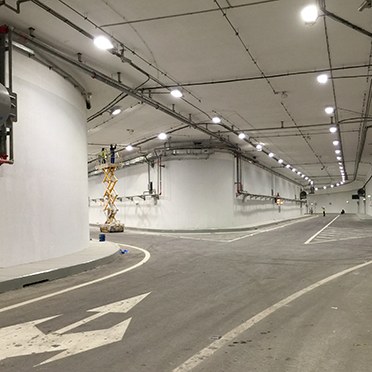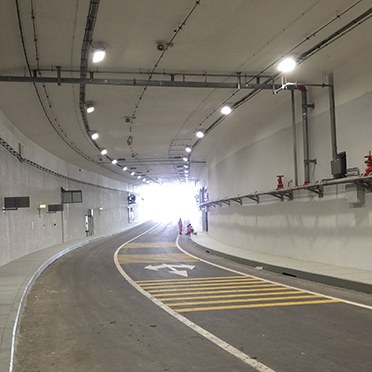Connecting the classics
- Lamp efficacy
Lamp efficacy
Ensuring the lamp efficiently converts electricity into light (lm/W).
- Ballast classification
Ballast classification
Controlling the electricity supply to the lamp (Energy Efficiency Index).
- Luminaire distribution
Luminaire distribution
Controlling light emission using optics which bend and shape the light to the correct location.
- System efficacy
System efficacy
Combining optical and thermal control within the luminaire (luminaire lm/W).
- Presence/absence detection
Presence/absence detection
Presence: Lights automatically turn on/off with movement. Absence: Lights automatically turn off and must be manually switched on.
- Daylight detection
Daylight detection
Artificial lighting which responds to the natural light conditions.
- Constant illuminance
Constant illuminance
A function designed to produce correct light levels for the duration of the maintenance period.
- Task-scene setting
Task-scene setting
Allowing the user to set scenes and adapt the lighting to different tasks.
- Timed off
Timed off
Automatic cut-off can be installed to turn all lights off during unoccupied hours.
- Task lighting
Task lighting
Lighting task areas with the correct amount of light.
- Zoning of lighting
Zoning of lighting
Lighting is zoned according to area use.
- Maintenance schedule
Maintenance schedule
Maintenance must be performed in response to product age, performance and environment.
- Waste light
Waste light
Eliminating waste light which does not hit the intended target.
- Reflectance
Reflectance
Taking advantage of light which is reflected from the surface within the space.
- Visible smart metering
Visible smart metering
Results of actions can be quickly seen as increased or decreased energy use to encourage responsible energy consumption.
A vast new tunnel project connects the famous institutions that define the heart of the Saadiyat Island Cultural District: Louvre Abu Dhabi, Guggenheim Abu Dhabi and the Zayed National Museum.
The 1.2-kilometre-long tunnel, which is 12 metres wide and 6 metres deep, is only 200 metres shorter than the nearby Sheikh Khalifa Bridge that links Saadiyat Island to the city. The tunnel allows works of art to be delivered safely and discretely to each of the new museums – a key consideration when external temperatures can top 50°C and when priceless pieces by the likes of Picasso, Manet and Gauguin are ¬likely to be amongst the consignments. A crucial element of the project, for which 200,000 cubic metres of rock and sand had to be excavated, was the tunnel lighting in the tunnel. With extensive experience in both road and tunnel lighting, Thorn was chosen to work on defining the best possible solution.
Over 433 GTLED advanced LED luminaires have been installed, providing uniform illumination and excellent glare control throughout the tunnel. Excellent thermal management ensures that both the electronic drivers and the LEDs can cope with ambient temperatures up to 50°C. The GTLED range is designed for long-lasting service with a GORE® protective vent and an IP66 rating for dependable quality. The GOTTHARD ALUMINIUM provides high luminance levels in the threshold and transition zones. The higher light levels at the entrance make it easier for the eyes to adjust from the natural daylight to the artificial light in the tunnel.
Mounted at an optimised height of 90 centimetres, the award-winning Flat Beam® technology of ORUS LED meets all the necessary safety standards on the entrance ramps. The designers were particularly keen to find a solution that suits the architecture without having to use poles.
Controls always play an important role when it comes to tunnel lighting. Different light levels are selected during the day, depending on the amount of natural daylight outside. Thorn teamed up with Systemia and Irem to create a reliable and efficient system. The luminance meter outside the tunnel measures the amount of natural daylight while the lighting flux regulator adjusts the lighting levels inside the tunnel according to the data received. The LED luminaires are controlled using the 1-10V dimming method, which is expected to deliver energy savings of approximately 40 percent. In addition, driver safety is improved by making it easier for the human eye to adjust to the lighting conditions in the tunnel.


